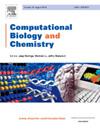Structure-based profiling of putative therapeutics against monkeypox virus VP39 using pharmacophore modelling and molecular dynamics simulation studies
IF 2.6
4区 生物学
Q2 BIOLOGY
引用次数: 0
Abstract
The growing global health threat of the monkeypox virus (MPXV) underscores the critical need for effective antiviral agents, since there are currently no therapeutics. The MPXV VP39, a methyltransferase, is essential for viral replication, hence a potential target for anti-MPXV drug candidates. Herein, a structure-based pharmacophore modelling and molecular docking approach was employed to screen natural compounds (NCs: 581,426) from the COCONUT database for potential inhibitors of MPXV VP39. After ranking of the docking scores, an ensemble-based docking of the top-ranked 20 NCs against multiple conformations obtained from ttcluster analysis of the molecular dynamics simulation trajectory of unbound MPXV VP39 further identified five leads with favourable interaction profiles, drug-likeness, ADMET properties, and synthetic features when compared to the reference standard (sinefungin). Further analysis of the thermodynamic stability of the resulting complexes of the leads over a 100-ns MD simulation period revealed varying degrees of thermodynamic stability while maintaining the structural integrity of MPXV VP39. Furthermore, the thermodynamic binding free energy calculation, while corroborating the docking analysis, identified CNP0297833 (-39.07 kcal/mol), CNP0371756 (-25.76 kcal/mol), and CNP0402319 (-19.26 kcal/mol) as the most promising candidates, with better modulatory effect against MPXV VP39 relative to sinefungin (-3.68 kcal/mol). These leads were stabilised with hydrophobic (Phe115, Val139, and Val116) and electrostatic (Glu46 and Asp138) interactions in different conformational clusters. In addition to the observed consistent interaction patterns, favourable binding energies, pharmacokinetics, ADMET, thermodynamic stability, and molecular orbital energies of these leads, the potential for optimisation for enhanced binding features for the active site of MPXV VP39 was elucidated. Further in vitro investigation to validate these findings is suggested to establish the putative leads as therapeutics targeting the replication phase of MPXV.
利用药效团模型和分子动力学模拟研究对猴痘病毒VP39的推定治疗方法进行结构分析
猴痘病毒(MPXV)日益增长的全球健康威胁强调了对有效抗病毒药物的迫切需要,因为目前没有治疗方法。MPXV VP39是一种甲基转移酶,对病毒复制至关重要,因此是抗MPXV候选药物的潜在靶标。本文采用基于结构的药效团建模和分子对接方法从COCONUT数据库中筛选MPXV VP39潜在抑制剂的天然化合物(NCs: 581,426)。在对对接得分进行排序后,对排名靠前的20个NCs与未结合MPXV VP39分子动力学模拟轨迹的聚类分析获得的多个构象进行了基于集成的对接,进一步确定了与参比标准(sininefungin)相比具有良好相互作用谱、药物相似性、ADMET特性和合成特征的5个先导物。进一步分析了引线配合物在100 ns MD模拟周期内的热力学稳定性,揭示了MPXV VP39在保持结构完整性的同时具有不同程度的热力学稳定性。此外,热力学结合自由能计算在验证对接分析的基础上,确定了CNP0297833(-39.07 kcal/mol)、CNP0371756(-25.76 kcal/mol)和CNP0402319(-19.26 kcal/mol)是最有希望的候选化合物,相对于sininefungin(-3.68 kcal/mol),它们对MPXV VP39的调节效果更好。这些引线在不同构象簇中通过疏水(Phe115, Val139和Val116)和静电(Glu46和Asp138)相互作用来稳定。除了观察到的一致的相互作用模式、有利的结合能、药代动力学、ADMET、热力学稳定性和分子轨道能量外,还阐明了优化MPXV VP39活性位点增强结合特征的潜力。为了验证这些发现,建议进一步进行体外研究,以建立针对MPXV复制期的治疗方法。
本文章由计算机程序翻译,如有差异,请以英文原文为准。
求助全文
约1分钟内获得全文
求助全文
来源期刊

Computational Biology and Chemistry
生物-计算机:跨学科应用
CiteScore
6.10
自引率
3.20%
发文量
142
审稿时长
24 days
期刊介绍:
Computational Biology and Chemistry publishes original research papers and review articles in all areas of computational life sciences. High quality research contributions with a major computational component in the areas of nucleic acid and protein sequence research, molecular evolution, molecular genetics (functional genomics and proteomics), theory and practice of either biology-specific or chemical-biology-specific modeling, and structural biology of nucleic acids and proteins are particularly welcome. Exceptionally high quality research work in bioinformatics, systems biology, ecology, computational pharmacology, metabolism, biomedical engineering, epidemiology, and statistical genetics will also be considered.
Given their inherent uncertainty, protein modeling and molecular docking studies should be thoroughly validated. In the absence of experimental results for validation, the use of molecular dynamics simulations along with detailed free energy calculations, for example, should be used as complementary techniques to support the major conclusions. Submissions of premature modeling exercises without additional biological insights will not be considered.
Review articles will generally be commissioned by the editors and should not be submitted to the journal without explicit invitation. However prospective authors are welcome to send a brief (one to three pages) synopsis, which will be evaluated by the editors.
 求助内容:
求助内容: 应助结果提醒方式:
应助结果提醒方式:


